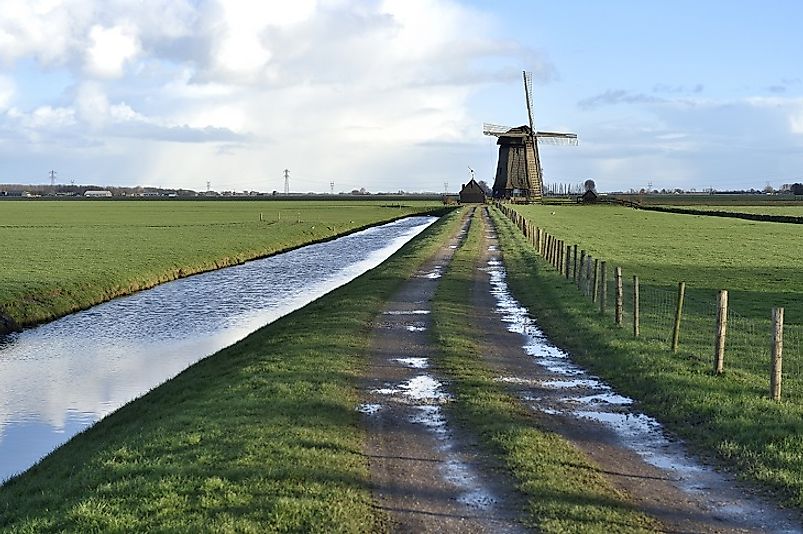Countries With The Most Land Reclaimed From Seas & Wetlands

Humans have been reclaiming land from lakes, rivers, and oceans for ages, as they have often needed to do so in order to create more areas for habitation, industry, and agriculture. There are several ways to do this, and the simplest is 'infilling', which entails the filling up of an otherwise underwater area with rocks, cement, clay, and dirt. Another reclaiming method used for agricultural land reclamation is by way of dredging and draining off the water, after which deep cement mixing may be used if the area needs to be contained. Most of the land reclamations carried out all over the world were due to needs for additional land spaces.
Countries that reclaim land face many risks in doing so, such as the liquefaction of a reclaimed area in the event of an earthquake. In large, however, the reclaiming of land has proven to give added benefits to those countries doing so, including the addition of new beaches, the development of new residential areas, business parks, and other uses, such as for increased agricultural land areas. This also often means more economic opportunities for the country concerned. In cases involving the draining of marshes, however, land reclamations can ultimately increase the risk of flooding and loss of property, as these drained areas do not have enough support in their foundations, and will therefore in time sink back under water.
7. Bangladesh (42 square miles)
Bangladesh has 42 square miles of reclaimed land along its coastlines. The government and developers are considering future plans to add more, with about 4,600 square miles in potential land to potentially reclaim. The country's 370 miles of coastline could support the new project. Bangladesh, being the world's eighth most populous country, truly needs more land for its burgeoning population.
6. Singapore (52 square miles)
Singapore is the only sovereign, island, city state in the world. It has gained 52 square miles from its reclamation projects to date, and has plans to recover more land in the future, although Malaysia has challenged these land projects. Its major land reclamation projects have so far added about 23 percent to its total land area.
5. Japan (110 square miles)
Japan has reclaimed about 96 square miles from Tokyo Bay, which now serves as land that is home to its largest industrial park. From this new land, it built up the Odaiba island. In addition, five other artificial reclaimed islands were built up and fortified as well. In Kobe, the Japanese have also reclaimed about 8.9 square miles.
4. Bahrain (122 square miles)
Bahrain has 122 square miles it now uses from reclaimed land along its coastline. The original land area of the country was merely about 257 square miles. Through reclamation, the small country has increased its land area substantially.
3. South Korea (600 square miles)
South Korea has only reclaimed about 600 square miles from its coastal wetlands, but is planning a huge reclamation project on its tidal mudflats upon which to build a new international business district. Such South Korean business districts are especially appealing to foerign investors, as the nation is considered as one of the safest countries in the world as of 2016.
2. Netherlands (2,700 square miles)
The Netherlands has about 2,700 square miles of land that have been reclaimed from what were once seas, marshes, lakes, and swamps. For this reason, much of the coastline areas of the country are also below sea level. Although it owns three island territories in the Caribbean, the Netherlands remains a densely populated country in need of additional space.
1. China (4,600 square miles)
China is the country that leads the world in land reclamation spaces, with around 4,600 square miles of such spaces added to date. The Communist government has made this an important national objective since the party came to power in the late 1940s. Figures indicate that about 65 percent of the tidal flats around the Yellow Sea have been reclaimed. The Yangzi lowlands and many parts of Shanghai and Wuhan have also had their areas expanded through reclaimed lands. In the Special Administrative Region (SAR) of Macau, most its land area has been sourced from that reclaimed from the sea. In another Chinese SAR, Hong Kong, the Hong Kong International Airport was constructed upon reclaimed land.











